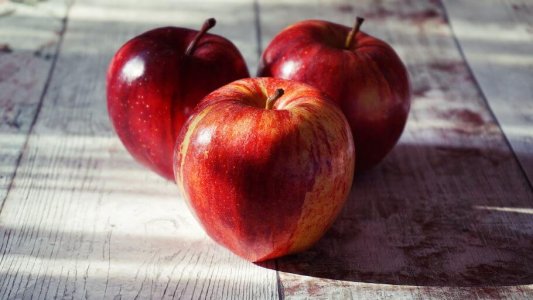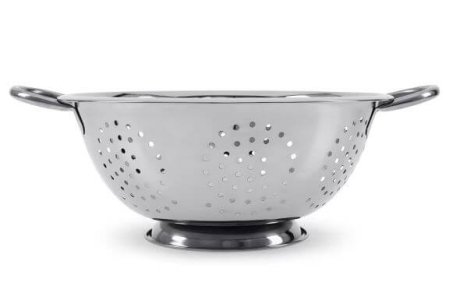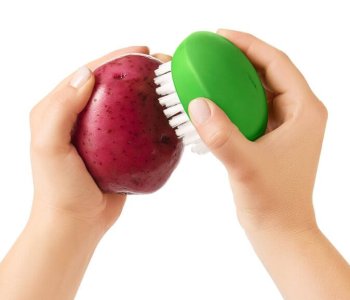Eliminate germs and pesticides with these expert produce cleaning techniques
- Replies 5
If you think of buying and cooking fresh veg as a bit of a gamble, you’re not alone. Reports suggest that there is the potential presence of bacteria like E. coli and Listeria lingering on produce, presenting a serious threat to the safety of high-risk groups such as pregnant women, seniors, children, and those with compromised immunity.
Fear not – a few simple steps and the right materials can help reduce the risk of foodborne illness and clean your produce for maximum taste and nutritional value.
First, you need to prepare a couple of items:
Fruit and veg that are ‘pre-washed’ does not need to be washed again and is considered safe to eat. However, produce that you eat raw such as lettuce and bean sprouts can be risky and should be cleaned with extra care.
First, fill a basin with cool water. This could be a mixing bowl, a salad spinner, or any other suitable item. Using a colander for an ‘inner bowl’ as well as having that solid outer bowl (one that doesn’t have holes), allows you to soak and scrub fruit and veg before removing it from the dirty water and rinsing it over the sink.
If the produce you’re washing is layered, remove the outer layer before cleaning.
Then, soak the produce for five to ten minutes in cool water, or the vinegar solution we mentioned above (1 part vinegar, 3 parts water) to loosen the dirt. According to this study, soaking before rinsing effectively removes bacteria rather than going straight to rinsing alone.
For things like strawberries, soaking can degrade their quality so skip this step if the items you’re dealing with are delicate.
Scrub the produce and submerge it in a basin of cool water to ensure you’re removing the bacteria. Alternatively, you can also use a vegetable brush and scrub gently as long as you’re targeting the grimier areas.
Make sure you’re scrubbing for at least 20 seconds. For produce with stems, like apples and tomatoes, it’s ideal that you scrub them with a produce brush. This is because their stem and blossom ends are particularly hospitable to grime.
The next step is to thoroughly rinse the produce. Rinse the items under running water. But be careful not to run it under a strong current or rapidly running water. Some produce, such as mushrooms, can get damaged easily.
The last step is to dry things off. You can do this by either gently shaking the colander or inner bowl over the sink to remove excess water, or you can pat or wipe the items dry with clean towels. Wiping, rather than air-drying, gives you one last chance to remove contaminants through friction.
In many of the cleaning ‘hacks’ and articles we’ve read, a common denominator is the use of white vinegar. Whether it’s to clean windows, sinks, and now food, it seems that this common pantry item is a miracle worker. But what exactly is the science behind this?
Vinegar and other chemical solutions have antibacterial, antifungal, and antiviral qualities. Distilled white vinegar contains 5-8% acetic acid, giving it a pH of about 2.5. This classifies it as an acid. These acid molecules are excellent at lifting dirt and soap scum, and makes it excellent to ward off the growth of mould and bacteria.
However, if vinegar is used at a higher concentration, it could cause skin irritation and eye damage. This is why in many cleaning tips and tricks, vinegar is always diluted with water.

Now that you know the how’s, what’s, and why’s of produce cleaning, do let us know if you’re keen on putting these tips into practice! If you have tips you’d like to share, comment down below!
Fear not – a few simple steps and the right materials can help reduce the risk of foodborne illness and clean your produce for maximum taste and nutritional value.
First, you need to prepare a couple of items:
- Basin with a colander in it or a large bowl with holes that can hold produce in but also lets silt and debris out.
- A clean produce-cleaning brush. This can help remove dirt from veggies like potatoes, carrots, and apples.
- Clean kitchen towels or paper towels
- White vinegar or a solution of one part white vinegar and three parts water.
Fruit and veg that are ‘pre-washed’ does not need to be washed again and is considered safe to eat. However, produce that you eat raw such as lettuce and bean sprouts can be risky and should be cleaned with extra care.
First, fill a basin with cool water. This could be a mixing bowl, a salad spinner, or any other suitable item. Using a colander for an ‘inner bowl’ as well as having that solid outer bowl (one that doesn’t have holes), allows you to soak and scrub fruit and veg before removing it from the dirty water and rinsing it over the sink.
If the produce you’re washing is layered, remove the outer layer before cleaning.
Then, soak the produce for five to ten minutes in cool water, or the vinegar solution we mentioned above (1 part vinegar, 3 parts water) to loosen the dirt. According to this study, soaking before rinsing effectively removes bacteria rather than going straight to rinsing alone.
For things like strawberries, soaking can degrade their quality so skip this step if the items you’re dealing with are delicate.
Scrub the produce and submerge it in a basin of cool water to ensure you’re removing the bacteria. Alternatively, you can also use a vegetable brush and scrub gently as long as you’re targeting the grimier areas.
Make sure you’re scrubbing for at least 20 seconds. For produce with stems, like apples and tomatoes, it’s ideal that you scrub them with a produce brush. This is because their stem and blossom ends are particularly hospitable to grime.
The next step is to thoroughly rinse the produce. Rinse the items under running water. But be careful not to run it under a strong current or rapidly running water. Some produce, such as mushrooms, can get damaged easily.
The last step is to dry things off. You can do this by either gently shaking the colander or inner bowl over the sink to remove excess water, or you can pat or wipe the items dry with clean towels. Wiping, rather than air-drying, gives you one last chance to remove contaminants through friction.
In many of the cleaning ‘hacks’ and articles we’ve read, a common denominator is the use of white vinegar. Whether it’s to clean windows, sinks, and now food, it seems that this common pantry item is a miracle worker. But what exactly is the science behind this?
Vinegar and other chemical solutions have antibacterial, antifungal, and antiviral qualities. Distilled white vinegar contains 5-8% acetic acid, giving it a pH of about 2.5. This classifies it as an acid. These acid molecules are excellent at lifting dirt and soap scum, and makes it excellent to ward off the growth of mould and bacteria.
However, if vinegar is used at a higher concentration, it could cause skin irritation and eye damage. This is why in many cleaning tips and tricks, vinegar is always diluted with water.
Key Takeaways
- Clean produce is important for people who are pregnant, senior, adolescent, or immunocompromised, as bacteria like E. coli and Listeria can attach to produce and grow.
- You can use a basin with a colander, a vegetable brush, and a clean cloth or paper towel to clean your produce.
- Scrub the produce for at least as long as you wash your hands—around 20 seconds.
- Rinse the produce in running water to remove contaminants, and then gently shake the colander to remove excess water.
- Pat or wipe the produce dry with a clean cloth.










